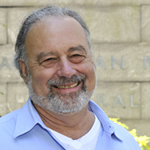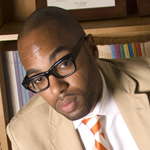| 41% of getS.E.T.go! readers think that the most important benefit of hosting the Square Kilometre Array telescope, would be the boost it gives our international reputation as experts in this field. | |
| 37% opted for “attracting more young people into science and engineering”; and 22% for “foreign investment for local technology projects”. |
Scientists at Stellenbosch University have developed a high-tech "tea bag" filter that fits into the neck of a bottle and turns polluted water into clean water as you drink from it.
Click here to read more.

A five-day mineral resources course recently saw 20 educators and curriculum advisors put their learning skills to the test. The team was given a unique opportunity to study with five highly regarded geoscientists and educators from the American Museum of Natural History (AMNH) in New York and Columbia University, on the topic of “The Mineral Resources of South Africa in Geographic Context”.
The aim of the course was to deepen the educators’ understanding of the geology and earth science of South Africa. The knowledge that attendees gained is now being used to develop inquiry-based activities for the classroom.
SAASTA and the AMNH organised this event to help meet the goals of the geography national curriculum for grades 10-12. The project, funded and hosted by SAASTA from 16 to 20 August, was partially supported by the US National Science Foundation.
The project forms part of the broader partnership between the AMNH and the Southern African Large Telescope (SALT), which includes sponsorship by AMNH for education and outreach efforts in South Africa.
Specific topics covered in the mineral resources workshop included:
- Geographical skills and techniques - political and geological maps.
- Development and sustainability - using indicators to contrast global and local
sources of mineral resources. - People and their needs - mineral resources, the economy, education, and careers.
Each day was organised around one of five essential questions that were explored through lectures, demonstrations, object study, economic reports for precious metals like platinum and palladium, mapping, video demonstrations of geologists at work, and data visualisations for use in the development of lessons and field trip experiences. At the end of the week, teams presented the outline of a teaching unit they created based on one of the topics.
The lecturers from AMNH and Columbia University were:
 |
Edmond Mathez, Curator and Professor at the American Museum of Natural History, New York, and Adjunct Senior Research Scientist at Lamont Doherty Earth Observatory of Columbia University. |
 |
Christopher Emdin, a faculty member in the Department of Mathematics, Science and Technology at Teachers College, Columbia University, where he also serves as Director of Secondary School Initiatives at the Urban Science Education Center. |
 |
Natasha Cooke-Nieves, an Ed.D. candidate at Columbia Teachers College studying the impact and connection between teachers’ classroom practices and professional development experiences at science cultural institutions. |
Jill Van Tongeren, a Ph.D. candidate at Columbia University – Lamont-Doherty Earth Observatory and the American Museum of Natural History. Her doctoral research is focused on the formation of the Bushveld Complex and its relationship to the overlying lavas.
Jay Holmes, Senior Coordinator of Urban Advantage Professional Development at AMNH who also works with middle school science teachers and students in New York City on long term science investigations.
 |
Dr Maritza Macdonald, Senior Director of Education and Policy, who manages the educational collaborations between SAASTA and AMNH including programmes related to SALT, online learning, and international science institutes. |
